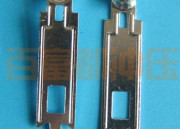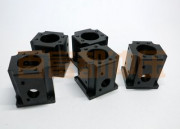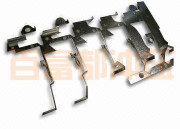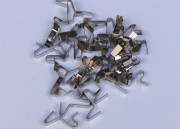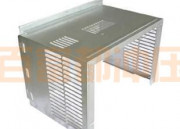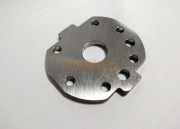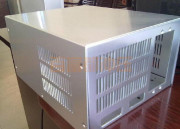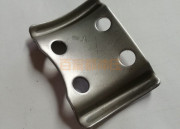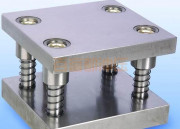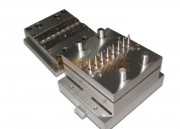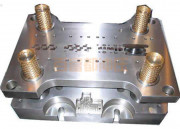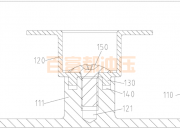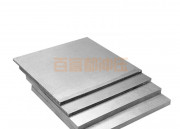Posted at 22/08/2022 By : deep drawing Categories : Blog,Techniques Comment: Comments Off on What are the technical requirements for the custom processing of hardware chassis shells? Not only that, but the chassis also needs to be resistant to vibration. Stamping resistance, corrosion resistance, dust-proof, waterproof, radiation-proof and other properties ensure the stable and reliable operation of the equipment.
2. With excellent performance and safety protection facilities, it is easy to operate, install and maintain, and ensure the safety of operators.
3. Strain in production, assembly, debugging and packaging and transportation.
4. It should meet the requirements of standardization, normalization and serialization.
5. Beautiful appearance. Applicable, color coordinated.
In the current era, the chassis has become an indispensable hardware product in the computer industry. Various styles of cabinets can be seen in major computer rooms. With the continuous development of today’s computer industry, the functions embodied by the cabinets are also getting bigger. Cabinets are generally used in network wiring rooms, floor wiring rooms, central computer rooms, data computer rooms, network cabinets, control centers, monitoring rooms, monitoring centers, etc.
2. What are the types of chassis shell materials?
The following Zhejiang Baifudu Electromechanical editor mainly introduces the common computer case materials for you. Let’s take a look!
1. Acrylic side through case
The transparency of the acrylic sheet is excellent, and the light transmittance of the colorless and transparent plexiglass sheet can reach 92%. In addition, the acrylic sheet also has flow weather resistance and strong adaptability to the natural environment. Long-term sunshine, wind and rain will not make it change. The acrylic side lens can see the use of the hardware inside the case. If the accessories inside the case have lighting effects, the color that comes out will be a different feeling.
2. Sound absorption and noise reduction chassis
The so-called active noise reduction is no longer blindly increasing the thickness of the board to passively and inefficiently block the noise, but adding high-density suction cotton to actively absorb the noise, eliminating a large part of the noise before it is transmitted to the chassis board, thereby enhancing the noise reduction effect. The material of the sound-absorbing cotton not only has a good sound-absorbing effect, but also has good heat dissipation. With several large-sized silent fans, it really kills two birds with one stone.
3. Glass side transparent case
Different from ordinary glass, tempered glass is generally used in the glass side see-through case, which forms compressive stress on the glass surface. When the glass is subjected to external force, it first offsets the surface stress, thereby improving the bearing capacity. Compared with ordinary acrylic and plastic side panels, the side panels made of tempered glass have stronger light transmittance, so after building a light pollution platform, the visual effect of tempered glass chassis is better, and the abrasion resistance of tempered glass is better. It should also be stronger than acrylic. After a period of use, it will not be scratched like acrylic, which will affect the appearance. In addition, due to the large weight of the tempered glass, it can effectively stabilize the body and prevent the chassis from resonating. Therefore, tempered glass is more and more popular with chassis manufacturers and DIY players.
4. Aluminum chassis
Aluminum chassis often have the characteristics of excellent heat dissipation, electromagnetic shielding, and light material. The chassis of this material is very textured whether you look at it or touch it, but the price of aluminum chassis is very expensive, and the appearance of the chassis is very high. Changes are also less. Compared with the steel plate, the strength of the aluminum plate is lower, especially the upper plate, the side plate, and the side plate that is not installed on the chassis. If you accidentally step on it, it will leave irreparable dents.
5. Plastic case
Compared with metal materials, one advantage of plastic materials is that shaping and coloring will be very simple, which increases the look and feel of the chassis. However, the quality is also clear. The plastic material not only has low strength and cannot absorb electromagnetic radiation, but also is more prone to scratches and difficult to maintain.
6. SECC chassis
SECC is electrolytic lead galvanized steel sheet. It is a stamping material, that is, a zinc layer is plated on the surface of the cold-rolled sheet, and the surface is smooth and gray. Anti-rust and corrosion-resistant, but the price is relatively high. The general plate thickness is between 0.4~3.2mm. SECC material is more common in big brand computer case manufacturers, and the price is more expensive than hot-dip galvanized sheet. So, we can see this material in high-end gaming cases or server cases.
Read More →

